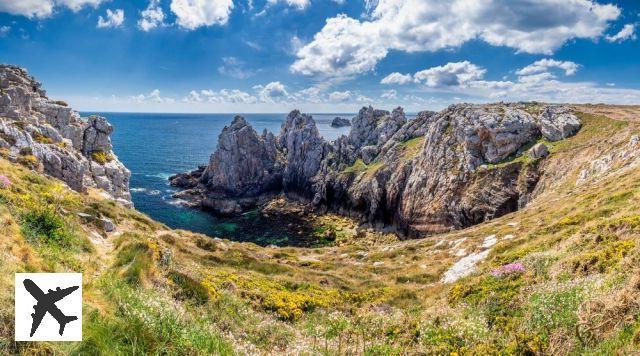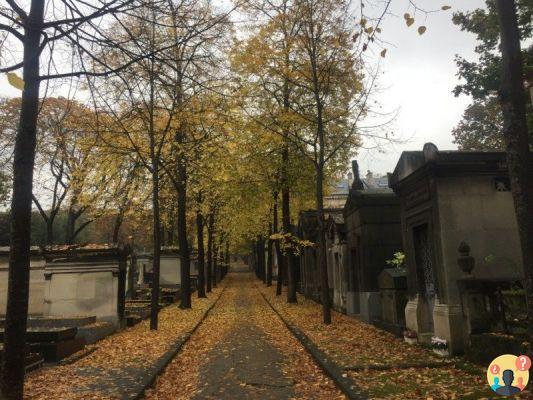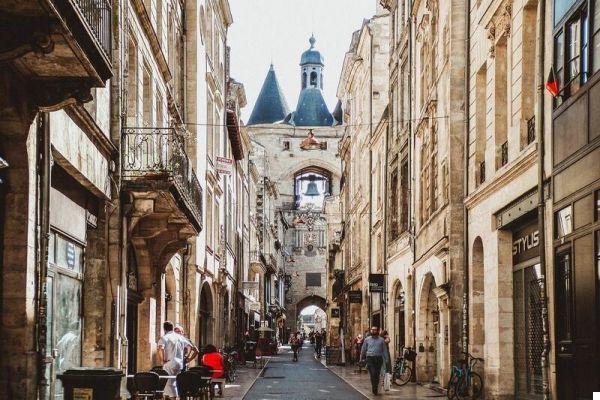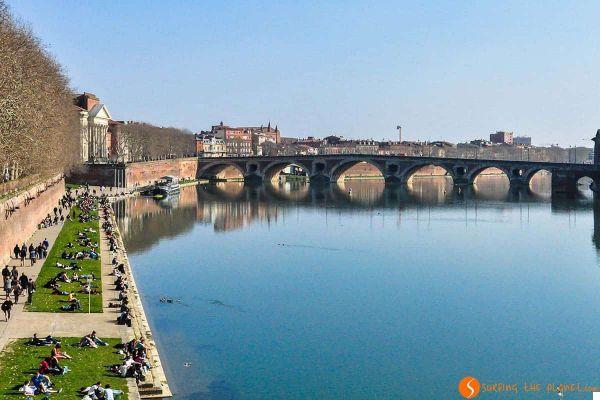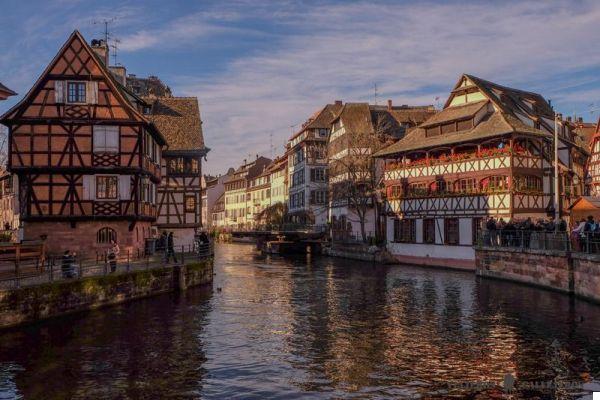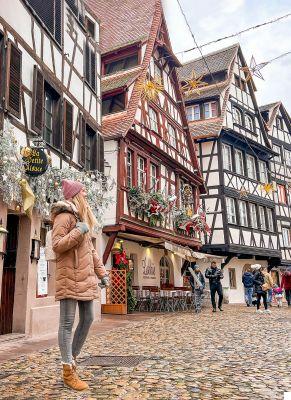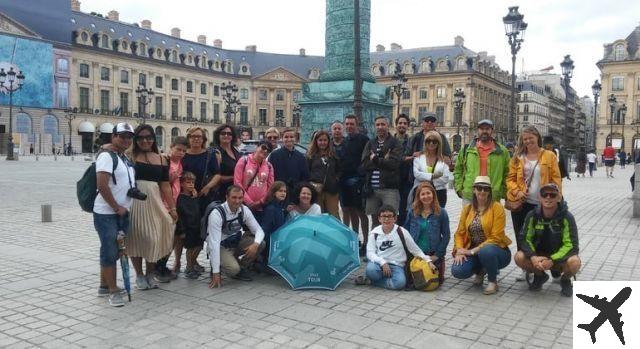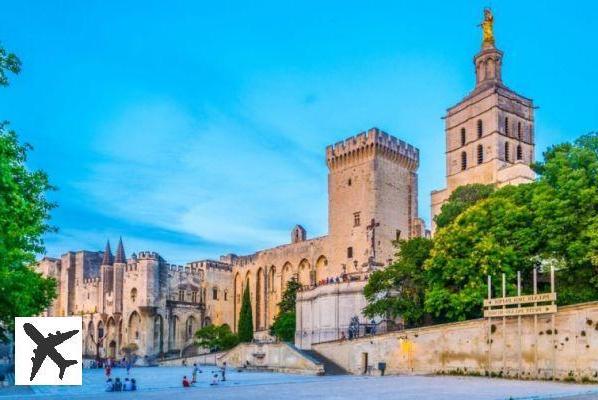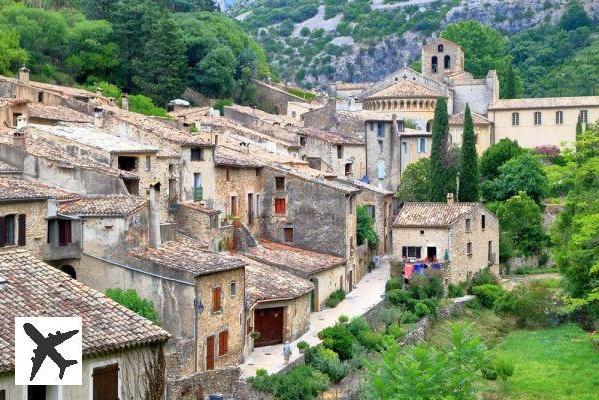
Summary
- 1. Gellone Abbey
- 2. Museums
- - The village of Antan
- - Argileum
- 3. The House of Lorimy
- 4. St. Lawrence Church
- 5. The Giant's Castle
- 6. Devil's Bridge
- 7. The gorges of the Hérault river
- 8. Circus of the Infernet
- 9. The Clamouse Cave
- 10. Hiking
- How to get to Saint-Guilhem-le-Désert?
- - By plane
- - By car
- - By bus
- Where to stay in Saint-Guilhem-le-Désert?
Discover the best things to do during your stay in this pretty village appreciated by the French!
Known to be a spiritual and cultural stopover on the pilgrimage route to Santiago de Compostela, visiting Saint-Guilhem-le-Désert is to discover a lovely destination for lovers of authenticity and outdoor activities. Dive into the heart of the "valley of legends" and discover exceptional landscapes where, nestled between immense cliffs, this medieval town stands proudly as the testimony of a legendary past.
Stroll through its flowered streets framed by buildings from another era, push open the doors of craftsmen's shops and enjoy this fantastic leap in time. Visits of monuments, hiking, swimming or cannyoning...enjoy the best of one of the most beautiful villages of France. And to make it easier for you, we suggest you discover the must-do's when you come to visit Saint-Guilhem-le-Désert!
Also to be read: The 9 most beautiful villages of Occitania
1. Gellone Abbey
Listed as a World Heritage Site by UNESCO since 1998, the Abbey of Gellone is THE place to visit when you are passing through the region. Built at the beginning of the 9th century, it quickly became a stop of choice for pilgrims.
Today you can visit it and discover its rich history. Don't hesitate to visit the museum located in the former monks' refectory. You will be able to observe, among other things, material reconstructions of the cloister as well as the tomb of William the Duke of Aquitaine - founder of the abbey.
2. Museums
The village of Antan
Push open the door of this 12th century house and get an idea of the art of living of yesteryear thanks to the human-sized santons that make up this atypical museum. The santon-makers of the village which holds it will be pleased to punctuate your visit with pretty anecdotes.
After immersing yourself in the heart of this fascinating 11,000-hour work, treat yourself to a relaxing break in the adjoining tea room. On the menu: homemade cakes and salads. Enjoy them on a lovely terrace in the shade of the trees.
Argileum
Situated in the village of Saint-Jean-de-Fos - a village that has been home to craftsmen for several generations - Argileum offers a unique experience around pottery. Nestled in a restored 19th century workshop, this museum allows visitors to discover the know-how and the history of the potters through an interactive and playful journey. Projections, games, animations and many other surprises await you. Something to delight young and old!
Bonus: the entrance to the museum is free every first Saturday of the month.
3. The House of Lorimy
From its pretty Romanesque façade to the Lombard arches on the ground floor, the Maison Lorimy is considered one of the most beautiful in the village. Formerly the Chapel of the Penitents, it is now a private property appreciated by the associations of the region. It often hosts different types of performances such as conferences, concerts or exhibitions.
4. St. Lawrence Church
Built at the end of the 11th century, the church of Saint-Laurent once acted as a citadel and was therefore a strategic location for the defence of Saint-Guilhem-le-Désert. During the Wars of Religion, its structure suffered many damages, including the destruction of its vault.
Nowadays, it is part of the municipal cultural spaces of the village.
5. The Giant's Castle
The Giant's Castle, also called "Cabinet du Géant" or "Colombier" is a building that has inspired many legends. And with good reason, as it is believed to have been an umpteenth military fortification in the Middle Ages, no one really knows what its role was in the past. Pigeon loft or home of a giant accompanied by his faithful magpie?
One thing is certain, this tower - majestically erected above the village - still holds many secrets.
6. Devil's Bridge
Originally used by monks and pilgrims to reach the abbeys of Gellone and Aniane, the Devil's Bridge has become one of those must-see places in Saint-Guilhem-le-Désert. 50 meters long, this impressive construction dating from the 11th century spans the Hérault river at the place called "gouffre noir" (black abyss).
It takes its name from a legend according to which the devil, after working to prevent the bridge from advancing, promised the Patron Saint Guilhem to build one of the strongest in exchange for "the soul of one of your servant dogs". He kept his word but realized that Guilhem had played him. In anger, he tried to destroy the bridge... in vain.
7. The gorges of the Hérault river
Running between Saint-Bauzille-de-Putois and Saint-Guilhem-le-Désert, the gorges of the Hérault constitute an exceptional landscape in the heart of the valley. Sheltering a varied and preserved fauna and flora, they also host a variety of outdoor activities. Hiking, climbing, canoeing or canyoning, there are many ways to enjoy its panorama with friends or family.
Don't forget your swimsuits! If swimming is not supervised in the gorges, the Pont du Diable beach is supervised in season.
Also to be read : 19 sites where to canoe in the Hérault region
8. Circus of the Infernet
Extraordinary natural wall shaped by vertiginous cliffs, the Cirque de l'Infernet is a popular place for hikers. Follow the paths winding above the Val de Gellone and enjoy the myriad of panoramas as you climb up. Admire the vines and olive trees clinging to the rocky massifs and occasionally observe the many species that have found refuge there.
Want more? Take the famous Fenestrelles path and go to the highest point of the circus: the Max Nègre viewpoint where you will have the chance to enjoy a most striking picture.
9. The Clamouse Cave
Located just a few metres from the Devil's Bridge, the Clamouse cave is a must in Saint-Guilhem-le-Désert. Today classified by the Ministry of Ecology and Development, it was only discovered in 1945. Discover the secrets and wonders of its countless galleries sculpted over thousands of years by the work of water. You will come out with stars in your eyes!
10. Hiking
To visit the region in all its aspects, hiking remains a must to do during your visit. Put on your best sneakers and set off on an adventure beyond the village walls.
Several circuits are available and can thus satisfy as many desires as possible. In particular, find the hikes of the hermitageNotre-Dame-du-Lieu-Plaisant. Get ready to be amazed!
Also read: Where to eat in Saint-Guilhem-le-Désert?
How to get to Saint-Guilhem-le-Désert?
We have heard that "all roads lead to the Valley of the Herald". By car, plane or bus, you are bound to reach your destination. Here are a few details, before leaving to visit Saint-Guilhem-le-Désert.
By plane
Are you thinking of coming by air? From several French cities - such as Paris, Lyon, Strasbourg or Nantes - find regular flights to the nearest airport: Montpellier Méditerranée. To be sure to find tickets at the best price, don't hesitate to use a flight comparator like Skyscanner.
From Montpellier Méditerranée airport
- Once you arrive at Montpellier airport, take the shuttle bus (line 120) in the direction of Place de l'Europe. It will take about 25 minutes.
- At Place de l'Europe, take tram line 1 ( blue) direction Mosson.
- From Mosson, bus 668 takes about 30 minutes to Saint-Guilhem-le-Désert.
Please note: please count approximately 1.60€ per ticket for your trips using the Montpellier Metropole and Hérault transport networks. In general, journeys are free for children under 5 years old.
By car
Many tourists take the car to visit Saint-Guilhem-le-Désert. Here's how to get there:
From Montpellier
Take the A 750 motorway (free of charge) in the direction of Millau/Lodève
From Millau
Take the motorway A 75 ( free) in the direction of Béziers/Montpellier
From Béziers
To visit Saint-Guilhem-le-Désert from Béziers, take the A 75 motorway ( free) in the direction of Millau/Montpellier.
By bus
From Montpellier
Not to be overlooked, the public transportation network is an excellent way to get to Saint-Guilhem-le-Désert. Thanks to LiO Hérault Transport you won't need to use a car.
In about 30 minutes, Line 668 - from Mosson - takes you to the Pont du Diable and Saint-Guilhem-Le-Désert.
Where to stay in Saint-Guilhem-le-Désert?
In this setting frozen in time, you won't find an infinite number of accommodations, such as hotels, guest houses or Airbnb. However, several good addresses nestle here and there. Find the accommodation that suits you best by using a hotel comparator.
On the historic square, in the pedestrian centre or in the heart of a forest, sleep in authentic surroundings full of good surprises.
It is now time to visit Saint-Guilhem-le-Désert!




